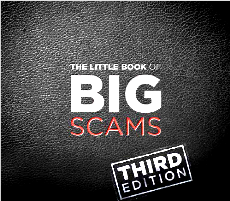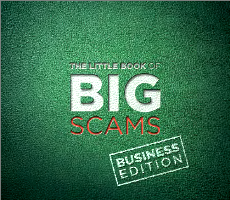Fraud Prevention
- Card Fraud - Home and Abroad
- ATM Fraud
- Counterfeit notes - Sterling and Euro
- Cheque fraud
- Invoice Fraud
Chip and PIN is easy and secure. Use the following information to help protect yourself from credit and debit card fraud:
- Take care when entering your PIN - always keep it safe, cover the keypad when entering the PIN, never tell anyone what it is and never write it down or record it on any device
- Keep your PIN secure at all times. Do not choose a number that might be easily guessed, like your date of birth, or numbers in descending (9876) or ascending order (1234) or four of the same numbers (1111)
- When paying for goods and services prevent your card being compromised by insisting on being present when your card is being processed
- You should never provide your PIN when carrying out telephone and internet transactions, or purchase by mail order
- From time to time, as part of the Bank's Fraud Monitoring System, the Bank may issue a 'referral' message to a retailer. In such circumstances, the retailer is required to contact the Bank to verify the Cardholder. A security check can then be carried out in order to ensure that it is the genuine cardholder using the card. For non face to face transactions (e.g. mail order or on-line purchases), the transaction may be declined for this reason. If you have any difficulty using your credit card, please turn to the back of the card and ring the Lost/Stolen telephone number or you can contact our 24 hour Emergency Helpline on 0345 309 8099.
When on holidays you will be more relaxed, and perhaps less vigilant, so here are a few more tips:
- When paying for anything with your credit or debit card don't let the card out of your sight. You can always accompany the staff member to the payment terminal or ask if the terminal device can be brought to you. Always ask for a receipt
- Consider whether it is necessary to carry all your cards with you when you go out. You could leave your cards safely locked away somewhere
- Have details of who to contact (in your card issuing bank) in the event that you lose your card or it is stolen
- Have your card and account number details available in the event that you should lose or have your card stolen
- Always keep your card and personal belongings in a safe place
When using an ATM, always remember to:
- Be aware of your physical surroundings
- Check that other people in the queue are at a reasonable distance
- Shield your PIN number with your hand to prevent hidden cameras or persons from capturing your information. Never reveal your PIN to anyone
- Use ATM machines which are in clear view and well lit. Be careful of machines in dark areas or places that don't appear to be well monitored. If suspicious, walk away
Observe the ATM
- Pay attention to the front of the machine - if the front of the machine looks different from others in the area (for example, if it has an extra mirror on the face), has sticky residue on it (potentially from a device attached to it) or extra signage, use a different machine and notify bank management or your local Police station with your concerns
- Pay close attention to the slot where you insert your card; if you're visiting an unfamiliar ATM machine; examine it carefully for hidden devices. Even if you are familiar with an ATM machine, pay attention to any differences or unusual characteristics of the card reader
- Never try to remove suspicious devices yourself
Counterfeit notes – Sterling and Euro
Sterling
- Feel - Most notes are embossed, usually the writing or the logo. The note should feel crisp, not limp, waxy or shiny. Security paper and special printing processes give banknotes a unique feel
- Look - Print lines should be sharp and well defined with no blurred edges. The colours should be clear and distinct with no hazy fringes
- Tilt - Check for the watermark image and security thread. The watermark should be hardly apparent until the note is held against a bright light source. Check for hologram features on some of the notes
- UV light - Under ultraviolet (UV) light, barcodes are visible
- Compare - Compare both sides of the notes to one you know is genuine
- Detector pen - Don't rely totally on the pen - use it as a guide. Be careful not to use the pen on ordinary paper as this will lower its effectiveness and may lead to a genuine note being marked as fake
- For all bank notes, do not rely on just one feature to assess whether a note is genuine, check a few. If in doubt, refer the item to your local financial institution
Euro
- Feel - you can feel the raised intaglio printing on all genuine notes and also the tactile marks on the €200 and €500 banknotes
- Look - hold the note against a bright light source, the denomination (e.g. €5, €10, €20 etc) in the top left hand corner should be fully visible and perfectly formed
- Tilt - look at the colour shifting ink on the reverse side of the high value notes (i.e. €50, €100 etc). The value numeral looks purple when viewed straight on, but appears olive green or even brown when viewed at an angle. On the reverse of low-value notes (i.e. €5, €10, and €20) look for the iridescent stripe that shines against bright light
- Check - you can see a security thread embedded in the genuine note. If you hold the banknote against a bright light source you can see the watermark and the security thread on the note. The watermark is visible from the front and back of the note. The watermark comprises the main architectural motif and the value numeral of the note
Always remember:
- Control who has access to your cheque books
- Do not sign cheques in advance
- Ensure all issued cheques and unused cheque numbers are accounted for. Check this when you get a new cheque book and review regularly to ensure no cheques are missing
- Cross all cheques 'a/c payee only'

